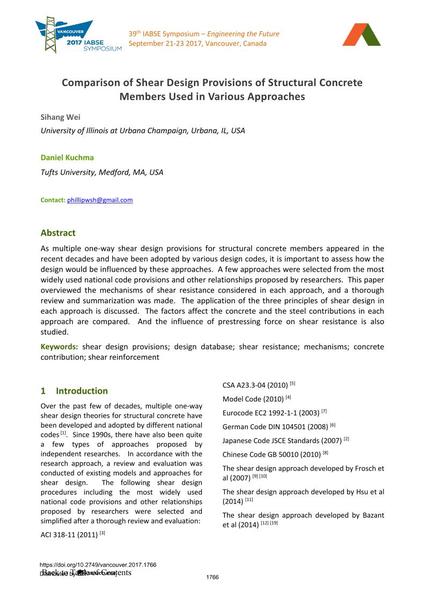Comparison of Shear Design Provisions of Structural Concrete Members Used in Various Approaches

|
|
|||||||||||
Bibliographic Details
| Author(s): |
Sihang Wei
(University of Illinois at Urbana Champaign, Urbana, IL, USA)
Daniel Kuchma (Tufts University, Medford, MA, USA) |
||||
|---|---|---|---|---|---|
| Medium: | conference paper | ||||
| Language(s): | English | ||||
| Conference: | IABSE Symposium: Engineering the Future, Vancouver, Canada, 21-23 September 2017 | ||||
| Published in: | IABSE Symposium Vancouver 2017 | ||||
|
|||||
| Page(s): | 1766-1773 | ||||
| Total no. of pages: | 8 | ||||
| Year: | 2017 | ||||
| DOI: | 10.2749/vancouver.2017.1766 | ||||
| Abstract: |
As multiple one-way shear design provisions for structural concrete members appeared in the recent decades and have been adopted by various design codes, it is important to assess how the design would be influenced by these approaches. A few approaches were selected from the most widely used national code provisions and other relationships proposed by researchers. This paper overviewed the mechanisms of shear resistance considered in each approach, and a thorough review and summarization was made. The application of the three principles of shear design in each approach is discussed. The factors affect the concrete and the steel contributions in each approach are compared. And the influence of prestressing force on shear resistance is also studied. |
||||
| Keywords: |
shear reinforcement shear resistance mechanisms shear design provisions design database concrete contribution
|
||||
